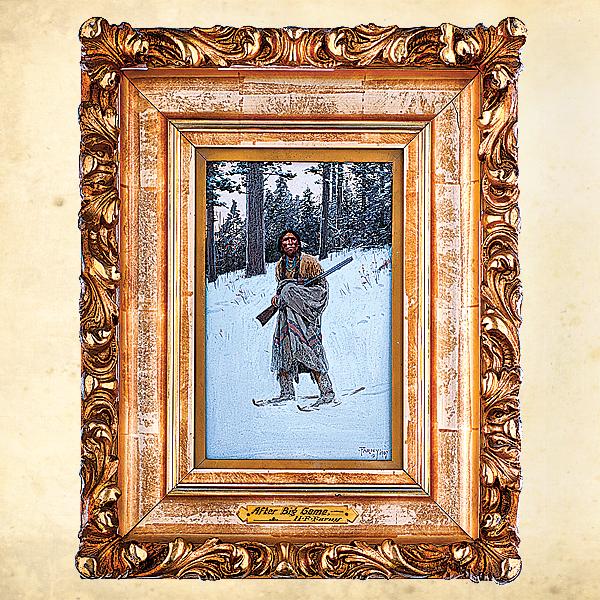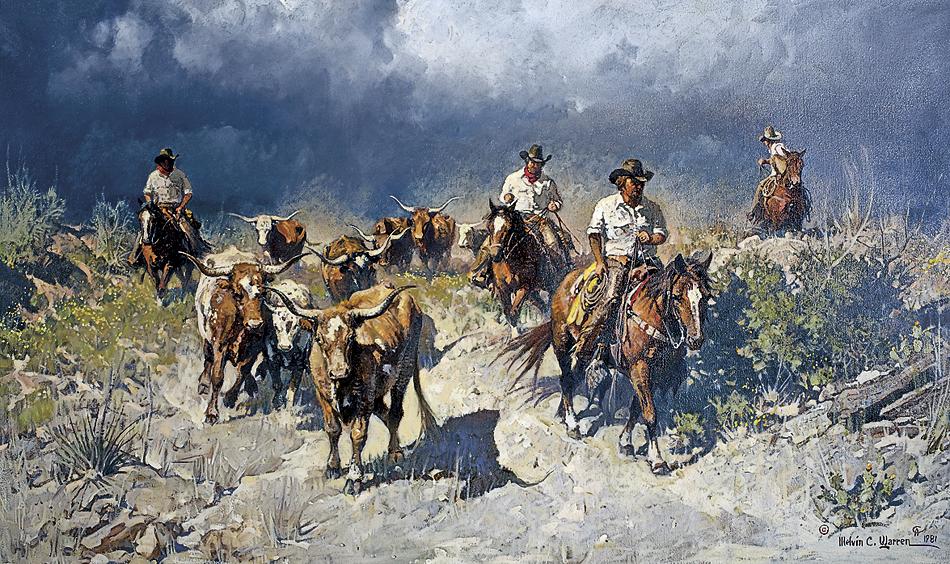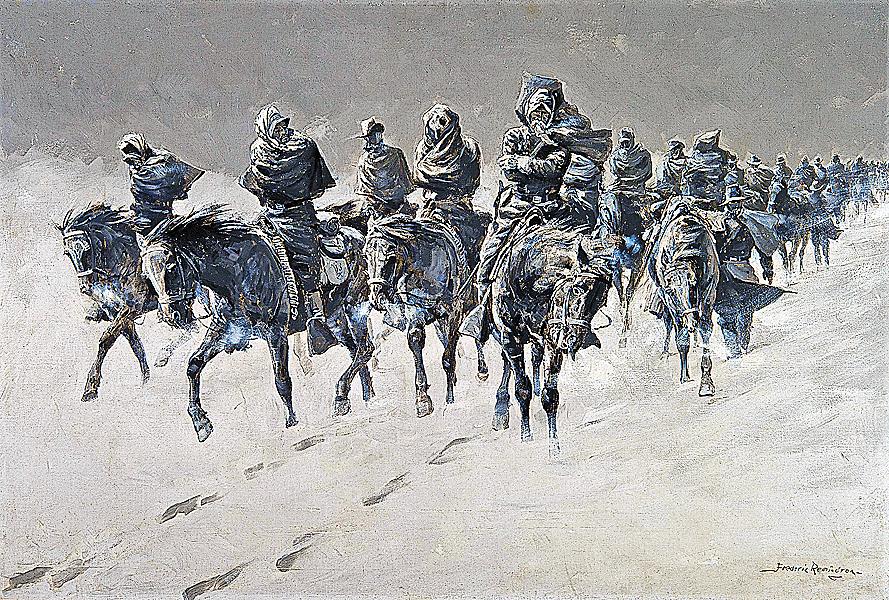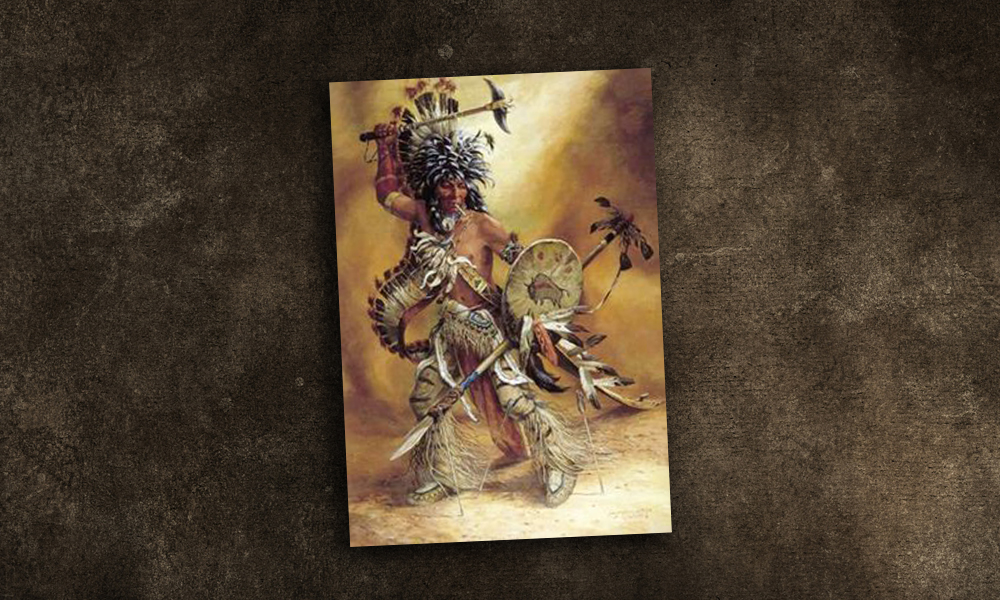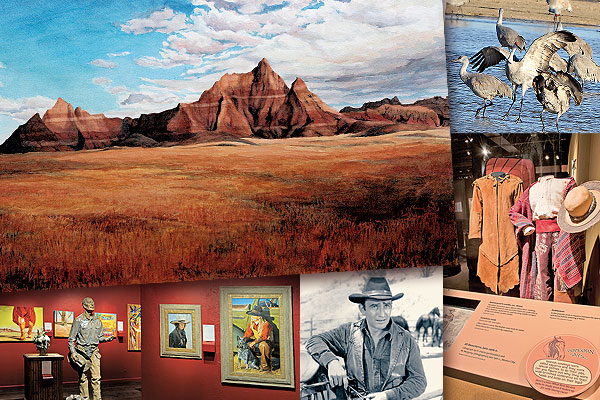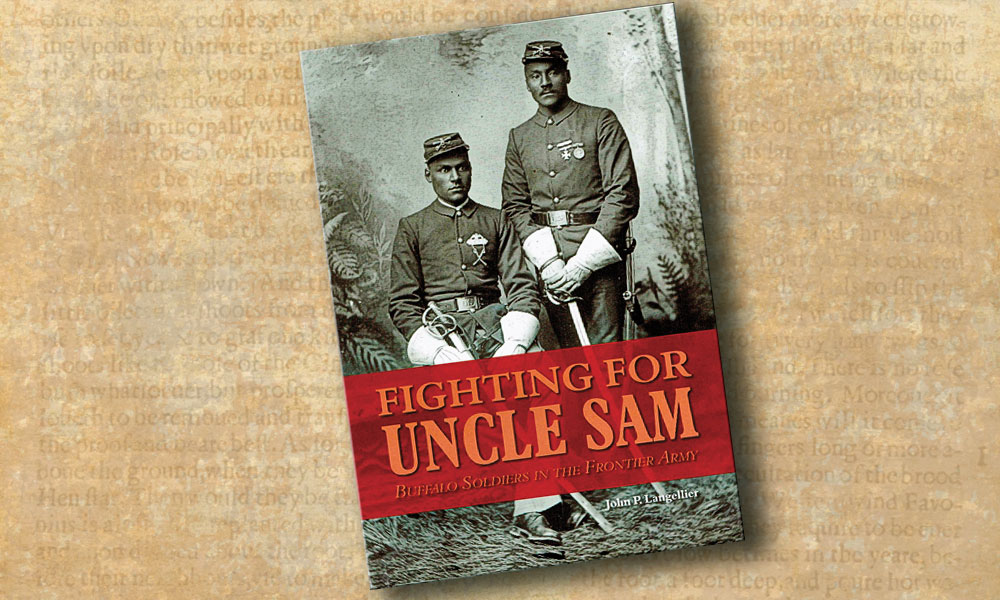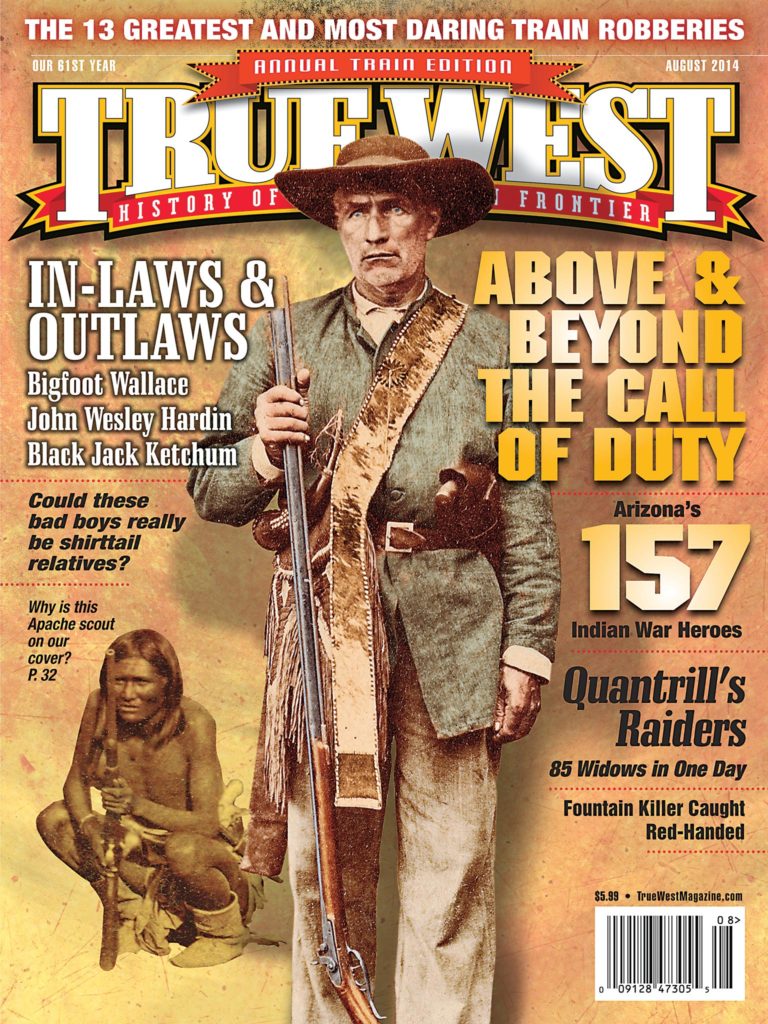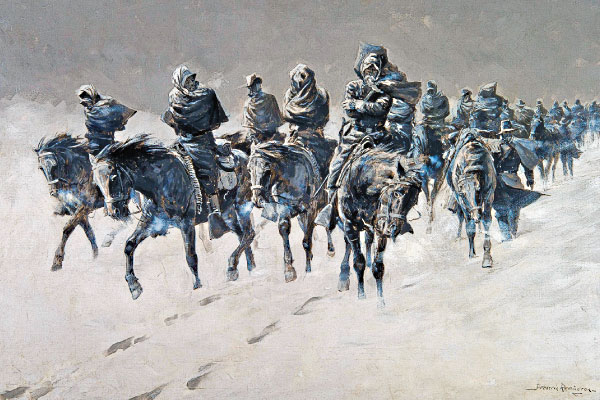 In the winter of 1866-67, Lt. Keene led cavalrymen from Fort Sedgwick, Colorado, on a mission to rescue government wood cutters.
In the winter of 1866-67, Lt. Keene led cavalrymen from Fort Sedgwick, Colorado, on a mission to rescue government wood cutters.
After 21 hours without fire or a drink of water, the men marched on. By daybreak, the lieutenant, stopping at a wood chopper’s cabin, learned of a camp farther up with plenty of water and started out again.
Frederic Remington chose to illustrate this moment, recounted in W.J. Carney’s “With Troop M on the Frontier” in the June 1899 McClure’s Magazine: “Never was there a greater mistake, for the blizzard came on so severe that we were completely lost, and wandered about on that desolate ridge for two days and a night before we got out, making three days and three nights in the saddle, with the thermometer from ten to thirty-three degrees below zero, and a blizzard raging more than half the time.”
That Remington saw these men as heroes is evident in his illustration, which bid in as the top lot at the Scottsdale Art Auction in Scottsdale, Arizona, on April 5. Ghostly soldiers lean into the violent, sustained winds of a blizzard, grimly determined, hugging themselves for warmth that is nowhere to be found, with one trooper even walking beside his equally steadfast horse to try to improve his circulation. One soldier, second from left, looks with questioning eyes at the leader.
That soldier could be the author himself. The men were in near mutiny against the lieutenant, and Carney had led the charge. After confronting the lieutenant, who threatened to have them court-martialed, Carney wrote, “I told him I would rather be shot for mutiny than die like a dog in a snow-drift.”
Of the 37 cavalrymen, only eight made it out unfrozen. Many of the rest, carted away in mule ambulances and wagons, were discharged for disability. Nine men “lost parts of their bodies,” Carney wrote.
The lieutenant’s name was actually not Keene, but George Armes, and he would point out that Carney’s account suited the writer. Even more, Carney left out the fact that the mission was successful. The troops had scared off the Indians and reached the wood camp, where they found the 20 wood cutters starving, but alive. The grateful lumberjacks even went with Lt. Armes on the trail of the Indians, although the snow made it impossible to follow them. When Lt. Armes reached Lewis’s ranch on January 24, 1867, he sent for ambulances to transport the bulk of the men, who were too frozen to continue the journey back to the fort. He wrote his captain that the troops had “endured the hardships like true soldiers and men.”
Captain John Mix endorsed Lt. Armes’s report: “The severe loss in frost-bitten men is to be regretted, but the citizens on Lauren’s Fork would doubt have been massacred but for the assistance sent.”
Why had the Indians attacked the wood cutters? Citizens told Lt. Armes that some of the Indians had been armed with Spencer carbines, which they may have gotten from soldiers massacred at Fort Phil Kearny in Wyoming, just the previous month, on December 21. The aftermath of that Indian attack on a wood train had proved deadly for that military relief party; the Indians killed all 81 men under the command of Capt. William Fetterman. It was the worst military disaster ever suffered by the U.S. on the Great Plains (and would remain so until the Battle of the Little Big Horn 10 years later).
Red Cloud had spotted hypocrisy after attending a peace council at Fort Laramie in June. The nation, in disagreement over how to handle the Indians, was allowing Doves to arrange peace treaties at the same time Hawks encouraged the military to build forts. When the Oglala Sioux chief saw forts were still being built, he took defensive action. “Red Cloud’s War” would continue against the U.S. military until the treaty at Fort Laramie in 1868, when the Indians legally gained control of the Powder River Country, at least until the Great Sioux War of 1876.
While caught in Red Cloud’s War, Fort Sedgwick remained crucial for Union Pacific track building. In the winter of 1866-67, when Lt. Armes and his soldiers went to rescue the wood cutters, the end of track was then 80 miles east of the post. By July 1867, the railroad reached the fort. For the first time, the Army could transport supplies to its posts west of the Missouri. The Army could now avoid 398 miles of wagon transportation by shipping goods from Omaha, Nebraska, to Fort Sedgwick via the Union Pacific Railroad. To minimize the expense of hauling forage during the winter, the Army posted mounted troops along the Union Pacific’s route.
For those courageous men who had endured such a bitter winter to ensure those tracks were built, the train couldn’t come quick enough.



